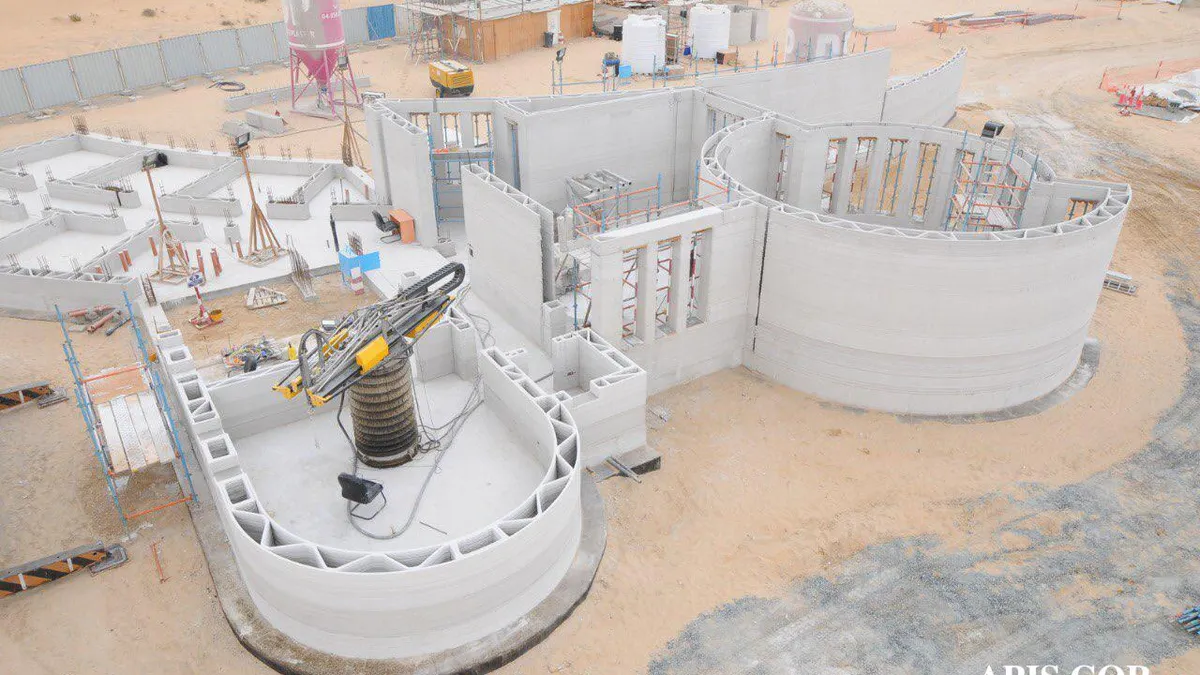A Boston-based technology company has completed what it says is the largest 3D-printed building in the world in 21 days.
3D printing equipment manufacturer Apis Cor recently built a two-story administrative office building for a Dubai government agency using one mobile printer. Standing at 31 feet tall with an area of 6,889 square feet, the building's walls were printed while the insulation, roof, foundation and windows were installed using traditional building methods, Apis Cor CEO Nikita Cheniuntai told Construction Dive.
The walls were printed on-site by moving the car-sized printer around the construction site via crane. The cost of the project, a research and development initiative, was not released.
The company's proprietary printing mixture consists of off-the-shelf materials like sand, cement, gypsum, and other proprietary components that are available for industrial purposes, he said. The entire process took place in an uncovered area in desert conditions, so finding the right mix for the printed material was a main goal of the project.
"The Dubai climate is very harsh, where temperature and humidity change significantly even within a day, so the material has to behave the same way all the time despite the changing of the environmental conditions," Cheniuntai said.
Printing of buildings is feasible in all types of climates, he said, as long as the project team can create the right blend of materials and the mixing equipment can work properly. Possible applications of the Apis Cor technology include residential, commercial and industrial construction, he said.
Apis Cor, which has been mainly 3D printing houses, plans to offer its technology in the U.S. next year, once it clears building code regulations. In 2017, the company printed a 400-square-foot demonstration house in 24 hours for about $10,000.
"Gaining industry approval for the use of 3D printing technology to build homes has been one of the major barriers to mass availability," he said, adding that his team's strategy is comparable to reinforced concrete masonry unit (CMU) walls, which are approved in the U.S.
"We can ensure our 3D-printed walls meet existing building standards by mimicking the characteristics of the CMU wall," he said.
Dubai is a world leader in 3D construction printing. Its "Dubai 3D Printing Strategy" is moving the country toward more 3D printed structures with the mandate that by 2025, every new building will be 25% 3D printed. The country's website cites many reasons for the initiative, including lowered construction and labor costs and reduced waste.













